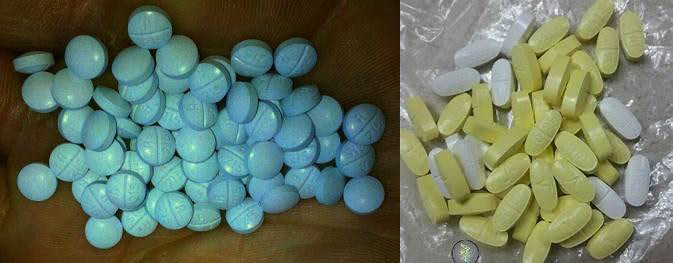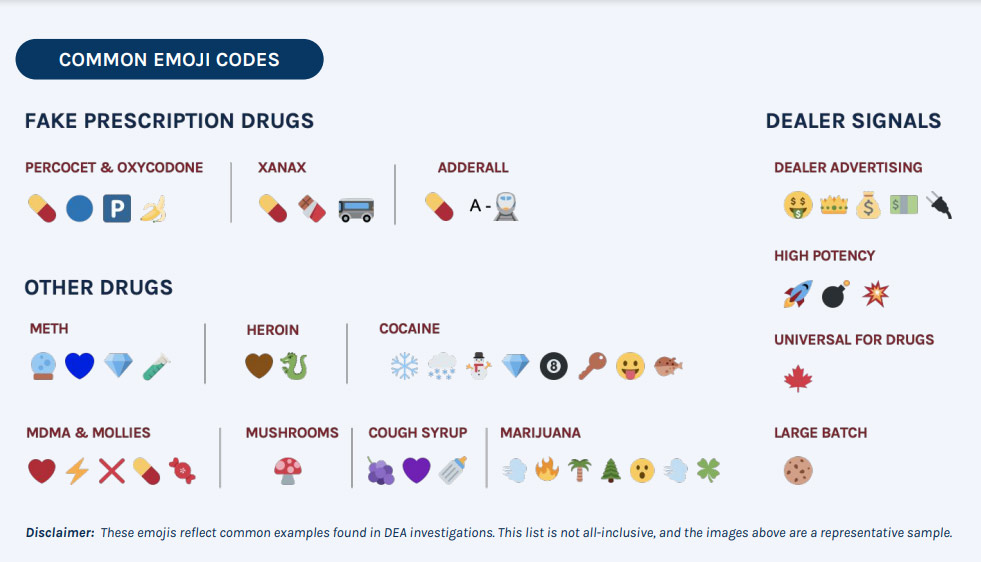“The package came in the mail for my daughter—I put it on the counter with everything else. I didn’t give it a second thought. Why would I?”
My friend—a retired cop—had called me every day and spoke the exact same words, sometimes more than once in a single conversation. The strange thing was that his voice lacked any affect, and sounded almost robotic.
“Mike, look, you’ve been through more than anyone could bear. Did you call the therapist I suggested? She’s really good, man. Please call her. Or let me do it for you. Look, tell her I sent you. Please, Mike, it’s—”
“Yeah, I know, Drew, I know,” Mike interrupted, “Anyhow, the package came in the mail for my daughter ….”
Social Media: the Good, the Bad, the Deadly
Undoubtedly, Snapchat, Facebook, Instagram, TikTok, Twitter, and YouTube have changed the way the world communicates.
Take one social media platform, in particular—Snapchat, or just “Snap” as it’s known by Gen Z-ers. Snap is a mobile app for smartphones that allows you to exchange pictures, videos, or messages with anyone else who has an account. Anyone can set up a Snapchat account, and it’s free.
Snapchat is different from other social media apps in that anything you post disappears after a certain amount of time. This is a big differentiator for people who don’t want whatever they send to be accessible forever, like when you post on Facebook or Instagram.
Social media is used both for good and evil. Cyberbullying is one example. Nearly every day, we read about a school-age kid who dies by suicide because of online bullying by peers. To learn more, visit this webpage: Cyberbullying linked with suicidal thoughts and attempts in young adolescents | National Institutes of Health (NIH)
Predatory sexual behavior is another prime example of how the misuse of social media can result in tragic outcomes. To learn more, including preventative measures, visit Online “Predators” and Their Victims (apa.org)
Countless positive examples of social media use also exist. People can connect with friends and family on the other side of the world in real-time, share baby pics, surfing videos, and pretty much anything—it’s limitless. Also, most communication on social media can be anonymous if you choose. It’s incredibly easy to set up numerous accounts without any paper trail. This is where things start to get unsettling.
I imagine that the Silicon Valley-based creators of most of these innocent platforms—all youngish, instant billionaires—likely envisioned their coding brilliance would make the world a happier place, improving lives by expanding connectivity worldwide, increasing entertainment, and setting a new global stage for postings of cute kittens and babies to brighten peoples’ days. Unfortunately, there’s a darker side to social media, and the results are deadly.
Drug Dealers Are Preying on Our Teens and Young Adults
The same ease of connection these apps deliver to our fingertips is now jeopardizing the lives of our young.
Our teens and young adults are being targeted by drug dealers who advertise their product on the same apps young people use to connect with friends, talk sports, explore fashion, share photos, or just surf around to kill time.
The drugs being sold online are disguised as legitimate medications, but in reality, they’re laced with dangerous, deadly narcotics.
The Drug Enforcement Administration (DEA) estimates that approximately 40 percent of illegal prescriptions sold on the streets (or online) are laced with fentanyl—a synthetic opioid up to 100 times more potent than heroin. Fentanyl-related overdose deaths for individuals aged 14 to 18 grew by 169% in 2021.
Drug Dealers are Trolling Social Media, Looking For and Enticing New Buyers
Parents and caretakers should look on their children’s smartphones for apps that allow them to access drugs.
Social media has allowed unprecedented opportunities for drug dealers to sell to a teen demographic that isn’t inclined to walk to a street corner in a drug-infested neighborhood to buy illegal drugs. The dealers target children who are introverted and fearful, the gamers who rarely leave the safety of their homes, let alone their bedrooms. Gone are the days of hand-to-hand exchanges of cash for drugs.
Dealers use their social media accounts to advertise their wares—packages of pills with the names below. They often use code words or specific emojis embedded in stories or posts that disappear within a certain timeframe to avoid detection by law enforcement.
The buyers—our children—will then send a message indicating interest in purchasing a particular drug or drugs.
The dealer will then direct the buyer to encrypted apps such as WhatsApp, Signal, and Telegram, where the deal is made.
Next, the dealer will send a request to one-click pay apps such as Venmo, CashApp, or Zelle to be paid a certain amount. It’s essential for parents and loved ones to know the names of these apps and which ones your children or other family members are using on their phones.

Just a few clicks on the keyboard requesting some pills—Xanax, Adderall, pain medication like Percocet, Oxycontin, or Lortab, cannabis, cocaine, heroin, LSD,you name it—and the drugs will be delivered to your home.
Dealers often attempt to evade law enforcement by using certain emojis as codes for specific drugs. See the chart below for examples. Parents should be aware of these emojis and keep their eyes open for them in their teens’ or young adults’ messages and posts on social media.

Parents Wake Up! Knowledge is Power!
As parents and caretakers, you must know the facts about fentanyl and other deadly drugs threatening our youth online. Fentanyl is a synthetic opioid that is up to 100 times stronger than heroin. For more information, visit Fentanyl Facts (cdc.gov)
Parents must get aggressive with their teens and young adults. Parents aren’t supposed to be best friends with their kids—not during a crisis like the opioid overdose pandemic, where in California alone, in 2020, a person under 24 died every 12 hours from an accidental drug overdose. In a 12-month period ending in 2021, 108,000 people died the same way. The forecasts for 2023 are trending even higher.
Despite desperate efforts to educate our youth about the dangers of drugs and the perils of ordering drugs online, the number of overdoses continues to rise. Drug dealers are not resting; they’re constantly looking for new ways to get to our young, and they’re counting on parents to stick their heads in the sand.
- Federal agents seized millions of fake medications in the first three quarters of 2021.
- Twenty percent contained potentially fatal amounts of fentanyl. That number is expected to increase as the demand to escape depression, loneliness, and anxiety continues to grow.
- According to Forbes Health, young adults ages 18 to 25 in the US have the highest rate of experiencing any mental health concerns (30.6%) compared to adults aged 26 to 49 years and the highest rate of serious mental illness (9.7%). For additional information, visit Mental Health Statistics (2023) – Forbes Health
Arm Yourselves for Battle with Naloxone and Fentanyl Test Strips
Naloxone is an opioid antagonist medication (commonly known as NARCAN) that can reverse an overdose.
Also, fentanyl test strips are available to parents, drug users, and friends and loved ones to prevent accidental use of this life-threatening drug. For more information, visit Fentanyl Test Strips: A Harm Reduction Strategy (cdc.gov)
Be the first to check the mail. Watch for packages that are delivered by the U.S. Postal Service, FedEx, UPS, or other carriers. Also, look for packages that seem unusual—those with no clear postal markings or return addresses, misspelled names, etc. Always open packages and inspect the contents.
Take Action: Talking to Your Teens and Young Adults About Drugs
Prior to fentanyl, a conversation about drugs used to be about keeping children and young adults healthy and happy, involved in school and extracurricular activities, and engaged in life. Today, the purpose of the conversation is to keep them alive. You might be thinking, “They’ve already heard this,” or “They already know this,” or, “I don’t want to be a nag.” Resist these thoughts, as they’re most likely your subconscious letting you off the hook from taking action.
Here are some tips for speaking with teens or young adults:
- Come from a place of caring and compassion, not judgment.
- Discuss what you have read or heard about the opioid overdose epidemic.
- Develop empathy by speaking directly about what worries you the most (e.g., experimentation, overdose, death) and the effect these realities would have on you.
- Let your child or loved one talk without interruption. Listening is powerful.
- Offer to go to counseling or support groups together.
- Discuss NARCAN and fentanyl test strips.
- The first conversation is only the beginning—keep the dialogue open and follow up.
- Tell them you’re “in this together,” and they’re never alone.
- Continue to educate your children about the dangers of using drugs and ordering them online and how fentanyl doesn’t afford you a second chance at life.
- Hug your teens or young adults and tell them you love them.
Is it spying? Or is it your responsibility?
As parents, we struggle with many challenges in how best to interact with our young adult children. We’ve all heard the angry, appalled teenager say, “What’s wrong, you don’t trust me?” The best answer is: “Yes, I trust you, but I have an obligation as your mom (dad) to verify that you’re not getting in over your head. This isn’t negotiable. I need access to what you are searching for online and the connections you are making. Period.”
Stick to your guns and keep your cool, parents! This is a matter of life and death. You’ll most likely get some pushback when discussing this hot topic. Reacting to you strongly might indicate that they’re struggling with peer pressure or have friends who are using drugs. Whatever you do, don’t go on the offensive—that will just shut the conversation down. Instead, validate their frustration—usually a by-product of fear—and honor their feelings. Just keep the dialogue open and praise them for being a good communicator.
The other option is to use apps that allow you to see what they’re doing online and not tell your child you’re monitoring them. I consider this the second-best option. You know best your relationship with your child, so you’ll have to decide. But doing nothing isn’t an option. For information on parental controls, visit Top-Rated Parental Controls to Keep Kids Safe Online | Aura.
It’s Time to Fight Back and Take Action
“The package came in the mail for my daughter—I put it on the counter with everything else. I didn’t give it a second thought. Why would I?”
“I know Mike, I know. I’m so sorry for your loss. Please don’t continue to second guess yourself—it won’t bring her back, man …”
As parents and caregivers, we are responsible for knowing what our teens and young adults are doing online. It can be overwhelming to think about talking to them about the dangers of drugs and the ease with which they’re bought online. But we can’t let our hesitations get in the way of potentially saving their life. We have no choice but to jump in and join the fight against drug dealers who are targeting our loved ones. It’s truly a matter of life and death. Please don’t be one of those parents who wish they had tried harder to engage with their teen or young adult, to access their social media accounts, and prevent the unthinkable. Myriad resources exist to support your efforts. You can do this. You are not alone.
If you or someone you know experiences mental health issues, it is important to seek help from a qualified professional. Our Resource Specialists can help you find expert mental health resources to recover in your community. Contact us now for more information on this free service to our users.
About the Author
Andrew McKenna, JD – As the Deputy Director of NCADD Westchester, I am dedicated to leading our organization in its mission to combat substance abuse and promote healthier communities. Additionally, I have had the privilege of serving as a Television Contributor, using my expertise to raise awareness about critical issues related to addiction and recovery.
Having served as a Former Marine Corps Captain, I bring a strong sense of discipline and leadership to every endeavor. My experience as a Former Federal Prosecutor has equipped me with a deep understanding of the legal system and a commitment to upholding justice. I have also channeled my insights and experiences into becoming a Published Author, sharing my knowledge and perspectives with a broader audience.
Moreover, I have had the honor of being a Keynote Speaker at various events, where I address diverse audiences on topics ranging from addiction prevention to leadership and resilience. My multifaceted background allows me to contribute positively to various spheres, and I am committed to making a lasting impact in each role I undertake.
Want to read Sheer Madness? Check out the link above!
Your purchases will help support the costs of running rtor.org, a free service of Laurel House, Inc., a 501 (c)(3), nonprofit organization.
Laurel House, Inc., the sponsor of www.rtor.org, is a participant in the Amazon Services LLC Associates Program, an affiliate advertising program designed to provide a means for sites to earn advertising fees by advertising and linking to Amazon.com. Some links may be affiliate links. We may get paid if you buy something or take an action after clicking one of these.
Photo by Andrea Piacquadio: https://www.pexels.com/photo/male-teen-with-headphones-browsing-smartphone-3854184/
The opinions and views expressed in any guest blog post do not necessarily reflect those of www.rtor.org or its sponsor, Laurel House, Inc. The author and www.rtor.org have no affiliations with any products or services mentioned in the article or linked to therein. Guest Authors may have affiliations to products mentioned or linked to in their author bios.
Recommended for You
- Veterans and Addiction Recovery: How Families Can Support Their Service Member’s Healing Journey - July 14, 2025
- Trauma-Aware Yoga: A Gentle Path to Healing and Recovery - July 10, 2025
- Why Eating Disorders in Men Are Often Missed - July 3, 2025





